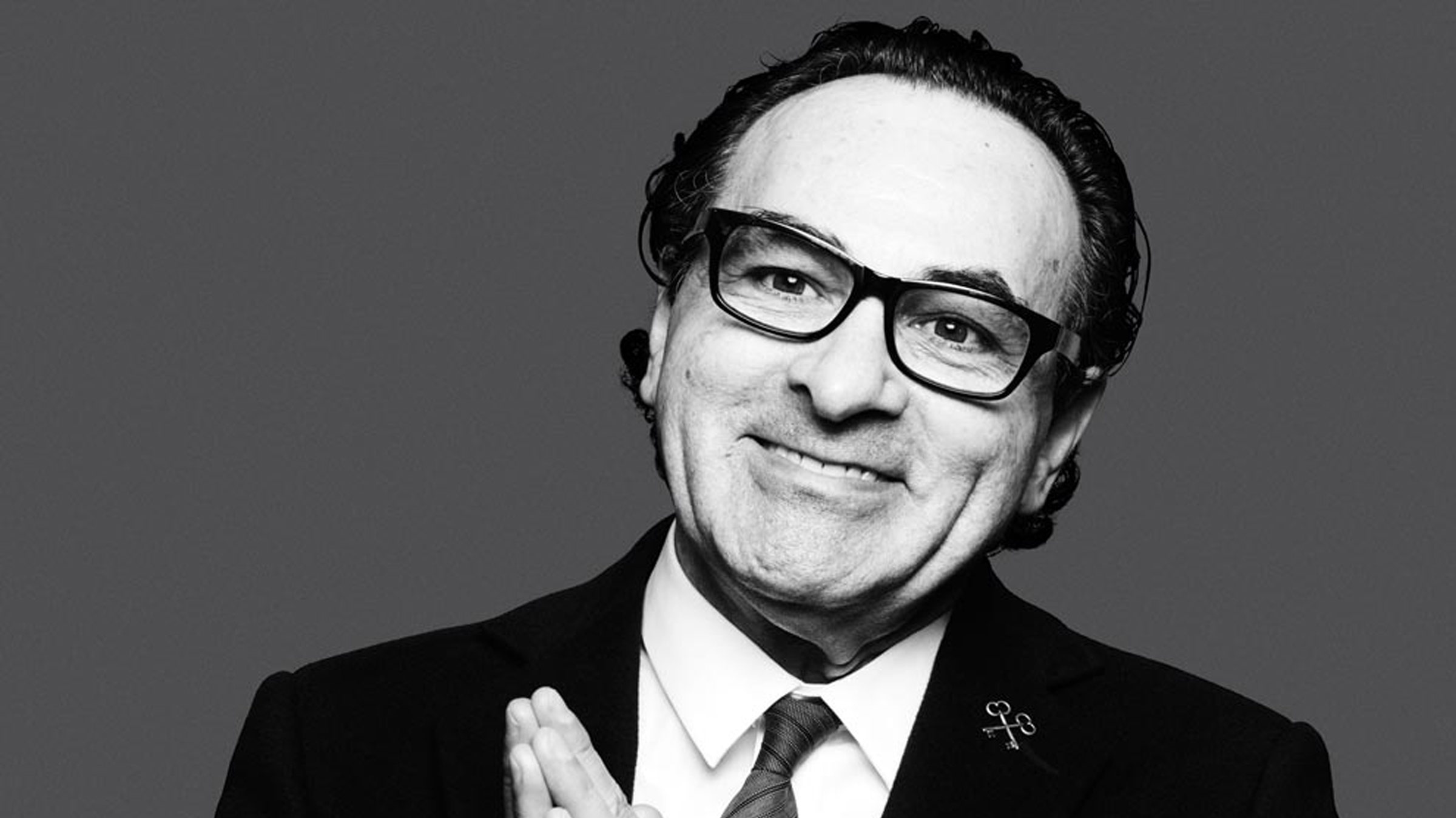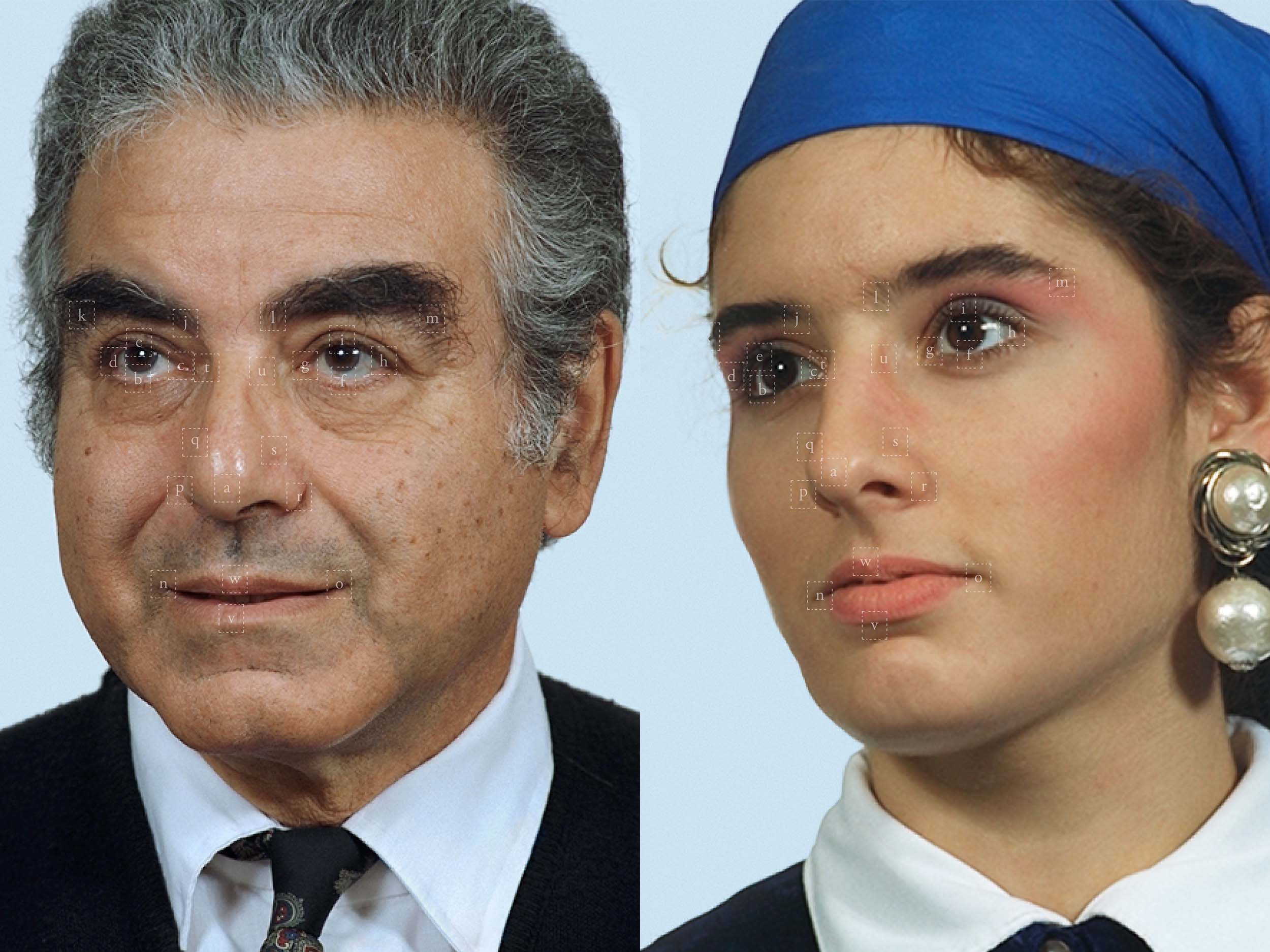Dimitri Dimitrov is a venerable institution. He has been a fixture on the Hollywood restaurant scene for more than 20 years. And now, as the maître d’hôtel at The Sunset Tower Hotel, you can find him most nights greeting Julianne Moore, George Clooney, Elon Musk—the who’s who of Hollywood—at the Tower Bar. Somehow Dimitri always just knows exactly what his clients’ needs are, catering to exactly what they want. He has this charm about him—the way he smiles, the way he clasps his hands close to his chest, his Eastern European accent—and a way to make anybody feel like a VIP. He is close to many of his clients and counts Johnny Depp and Sean Penn as friends. Tom Ford even passed along Dimitri’s name when he heard the hotel was looking for a maître d’. The two catch up below, and ten years later, Dimitri finally asks Tom why he recommended him for the job.
DIMITRI DIMITROV—Do you remember when we first met?
TOM FORD—Absolutely. You were the maître d’ at Diaghilev and were being followed around the room by a sterling silver cart filled with different caviars and vodka, as well as three very effeminate young men. You immediately made a great impression on me, and I have never forgotten it.
Above The Fold

Sam Contis Studies Male Seclusion

Slava Mogutin: “I Transgress, Therefore I Am”

The Present Past: Backstage New York Fashion Week Men’s Spring/Summer 2018

Pierre Bergé Has Died At 86

Falls the Shadow: Maria Grazia Chiuri Designs for Works & Process

An Olfactory Memory Inspires Jason Wu’s First Fragrance

Brave New Wonders: A Preview of the Inaugural Edition of “Close”

Georgia Hilmer’s Fashion Month, Part One

Modelogue: Georgia Hilmer’s Fashion Month, Part Two

Surf League by Thom Browne

Nick Hornby: Grand Narratives and Little Anecdotes

The New Helmut

Designer Turned Artist Jean-Charles de Castelbajac is the Pope of Pop

Splendid Reverie: Backstage Paris Haute Couture Fall/Winter 2017

Tom Burr Cultivates Space at Marcel Breuer’s Pirelli Tire Building

Ludovic de Saint Sernin Debuts Eponymous Collection in Paris

Peaceful Sedition: Backstage Paris Fashion Week Men’s Spring/Summer 2018
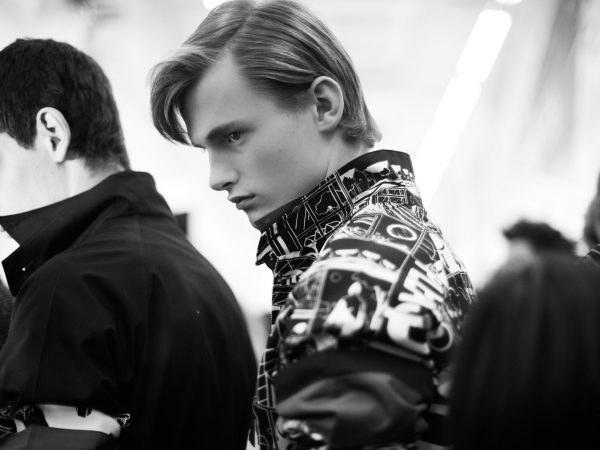
Ephemeral Relief: Backstage Milan Fashion Week Men’s Spring/Summer 2018

Olivier Saillard Challenges the Concept of a Museum

“Not Yours”: A New Film by Document and Diane Russo

Introducing: Kozaburo, 2017 LVMH Prize Finalist

Introducing: Marine Serre, 2017 LVMH Prize Finalist

Conscious Skin

Escapism Revived: Backstage London Fashion Week Men’s Spring/Summer 2018

Introducing: Cecilie Bahnsen, 2017 LVMH Prize Finalist

Introducing: Ambush, 2017 LVMH Prize Finalist

New Artifacts

Introducing: Nabil Nayal, 2017 LVMH Prize Finalist

Bringing the House Down

Introducing: Molly Goddard, 2017 LVMH Prize Finalist

Introducing: Atlein, 2017 LVMH Prize Finalist

Introducing: Jahnkoy, 2017 LVMH Prize Finalist

LVMH’s Final Eight

Escaping Reality: A Tour Through the 57th Venice Biennale with Patrik Ervell

Adorned and Subverted: Backstage MB Fashion Week Tbilisi Autumn/Winter 2017

The Geometry of Sound

Klaus Biesenbach Uncovers Papo Colo’s Artistic Legacy in Puerto Rico’s Rainforest

Westward Bound: Backstage Dior Resort 2018

Artist Francesco Vezzoli Uncovers the Radical Images of Lisetta Carmi with MoMA’s Roxana Marcoci

A Weekend in Berlin

Centered Rhyme by Elaine Lustig Cohen and Hermès

How to Proceed: “fashion after Fashion”

Robin Broadbent’s Inanimate Portraits

“Speak Easy”

Revelations of Truth

Re-Realizing the American Dream

Tomihiro Kono’s Hair Sculpting Process

The Art of Craft in the 21st Century

Strength and Rebellion: Backstage Seoul Fashion Week Autumn/Winter 2017

Decorative Growth

The Faces of London

Document Turns Five
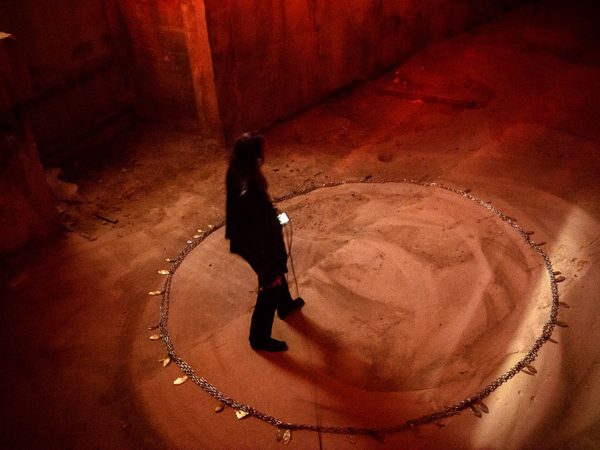
Synthesized Chaos: “Scholomance” by Nico Vascellari

A Whole New World for Janette Beckman

New Ceremony: Backstage Paris Fashion Week Autumn/Winter 2017
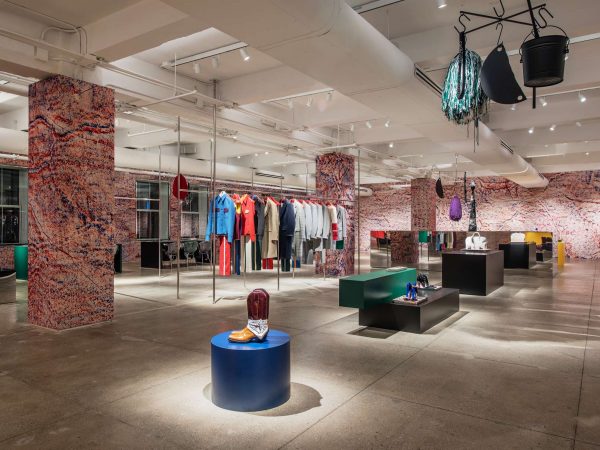
New Perspectives on an American Classic

Realized Attraction: Backstage Milan Fashion Week Autumn/Winter 2017

Dematerialization: “Escape Attempts” at Shulamit Nazarian

“XOXO” by Jesse Mockrin

Brilliant Light: Backstage London Fashion Week Autumn/Winter 2017

The Form Challenged: Backstage New York Fashion Week Autumn/Winter 2017

Art for Tomorrow: Istanbul’74 Crafts Postcards for Project Lift

Inspiration & Progress

Paskal’s Theory of Design

On the Road

In Taiwan, American Designer Daniel DuGoff Finds Revelation

The Kit To Fixing Fashion

The Game Has Changed: Backstage New York Fashion Week Men’s Autumn/Winter 2017

Class is in Session: Andres Serrano at The School

Forma Originale: Burberry Previews February 2017

“Theoria”

Wearing Wanderlust: Waris Ahluwalia x The Kooples

Approaching Splendor: Backstage Paris Haute Couture Spring/Summer 2017

In Florence, History Returns Onstage

An Island Aesthetic: Loewe Travels to Ibiza

Wilfried Lantoine Takes His Collection to the Dancefloor

A Return To Form: Backstage New York Fashion Week Spring/Summer 2018

20 Years of Jeremy Scott

Offline in Cuba

Distortion of the Everyday at Faustine Steinmetz

Archetypes Redefined: Backstage London Fashion Week Spring/Summer 2018

Spring/Summer 2018 Through the Lens of Designer Erdem Moralıoğlu

A Week of Icons: Backstage Milan Fashion Week Spring/Summer 2018

Toasting the New Edition of Document

Embodying Rick Owens

Prada Channels the Wonder Women Illustrators of the 1940s
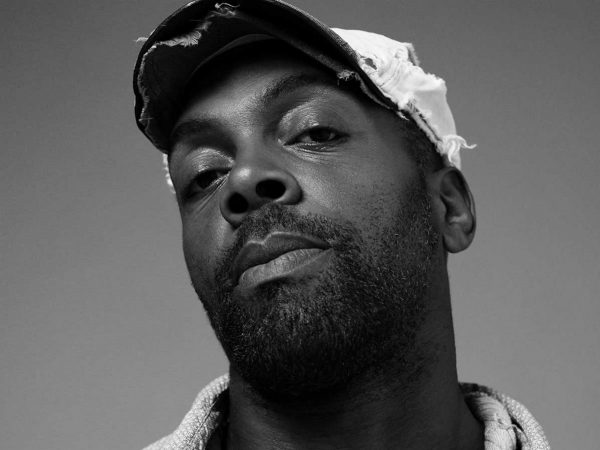
Andre Walker’s Collection 30 Years in the Making

Fallen From Grace, An Exclusive Look at Item Idem’s “NUII”

Breaking the System: Backstage Paris Fashion Week Men’s Autumn/Winter 2017

A Modern Manufactory at Mykita Studio

A Wanted Gleam: Backstage Milan Fashion Week Men’s Autumn/Winter 2017

Fashion’s Next, Cottweiler and Gabriela Hearst Take International Woolmark Prize

Beauty in Disorder: Backstage London Fashion Week Men’s Autumn/Winter 2017

“Dior by Mats Gustafson”

Prada’s Power

George Michael’s Epochal Supermodel Lip Sync

The Search for the Spirit of Miss General Idea

A Trace of the Real

Wear and Sniff

Underwater, Doug Aitken Returns to the Real
DIMITRI—Diaghilev was this amazing little Russian-style restaurant—lots of caviar— a five-star place, the number one in service by Zagat year after year. It was a place for people in the know and the restaurant of choice for many famous people. Actually all the Diaghilev clientele, they’re regulars at the Tower Bar today. You were a part of the regular clientele. The first time we met was in the late 90s. I was managing the restaurant. I took your reservation, and gave you the best table for six. You had just been promoted as the creative director of Gucci. I made you feel like a tremendous VIP, which you were. You had many dinner têtea- têtes there.
TOM—Where did you begin?
DIMITRI—A long time ago. The first restaurant I worked was called Inigo Jonesin Covent Garden in London. I was a teenager, 18 or 19. I barely spoke English. I was in awe just being in the middle of royalty: The Rolling Stones, The Bee Gees. It was amazing. Then I moved to Canada to be a part of the Ritz-Carlton in Montreal. That was in the late 70s to the 80s. I was a part of an amazing team that served Pierre Trudeau, dignitaries, and was a part of the Queen’s service. My maître d’ had come from Claridge’s in London. My foundation in old school service was set there.
TOM—What did they teach you?
DIMITRI—An endless list: serve from one side, not from the other; how you hold your hands; the language you use with a guest; on and on. This all goes back to the rules set by the Lausanne Hotel School. You always go back in time when you talk about service. During the long Montreal winters, I dreamed of California and being a part of Hollywood—exactly what I’m doing at this moment.
“Being well dressed and well mannered is the most important.” —Dimitri Dimitrov
TOM—So you came to California.
DIMITRI—When Diaghilev closed, I became in charge of the L’Ermitage hotel. One afternoon, I received a call from Jeff Klein, [the owner of the Sunset Tower Hotel]. He said, “I would love to have a cappuccino.” I didn’t know what he wanted, but said, “That’s my favorite drink, I would love to.” Apparently, the previous week he had had a dinner with you and Richard Buckley. The hotel and the restaurant were almost ready to reopen, but he had nobody to lead: “People are almost impossible to find. I’m giving up.” You then wrote my name on a coaster and slipped it to him, telling him to look for this man named Dimitri. That was the beginning in 2004. Time is flying, oh my god! Why did you recommend me for the job at the Sunset Tower Hotel?
TOM—I think that one of the key factors to great success at a restaurant or bar is a maître d’ with enormous warmth, style, and originality. You have all of these attributes in spades.
DIMITRI—When I was a kid, before you’d walk out of your place, you thought about how to get dressed and how to present yourself to the world. You didn’t put things on and go out without thinking. Being well dressed and well mannered is the most important. Today’s young kids, they have considerable intelligence and they may be technically savvy, but yet they come really sloppy in a t-shirt and jeans and a lack of manners. It really bothers me.
TOM—For you, presentation is important.
DIMITRI—Each night at the Tower Bar, it’s less about us. We try our best with the service and food, but the difference from night to night is the audience, the clientele. The blend of guests and how they interact makes many nights magical. And how they dress. We’ve created a mood and atmosphere, a civilized mood. I’m in charge of services and recognizing the needs of the clientele, so it’s never ever about me. I like it, but it’s just to create a mood that the guests enjoy and we cater to all their needs. The Sunset Tower has this tradition and history that comes from the building. By being in the Sunset Tower, you’re in the middle of Hollywood. It captures the vibe and mood of Hollywood in just one night.
TOM—What is the mood of Hollywood?
DIMITRI—The mood is motion pictures. I don’t mean just the actors, but also the studio heads, executives, the writers, the film directors—the creative part of Hollywood in all aspects—and the agents too. Bryan Lourd and Kevin Human are tremendous VIPs. They are at CAA, an agency that manages a lot of the talent. As soon as I receive a call from Bryan Lourd, he has his table, and there aren’t questions asked as his guest could be George Clooney, Sean Penn, or Nicole Kidman—it could be anyone! The Sunset Towers were made as apartments for rich clientele, with butlers. Just being in the corridor gives me goosebumps. Howard Hughes had four apartments. He had four mistresses living here. Ava Gardner lived here. Frank Sinatra was running around the place. Before Jane Russell died, she was a regular. She came for the nostalgia. One day, a little boy was describing the rooms upstairs to
her, and she was rolling her eyes thinking this kid is telling me what’s up there. Jane Russell was one of Howard Hughes’ muses and mistresses who lived there [laughs]! Back then the men were much better dressed. I can imagine you at the Sunset Tower then. Who would you have loved to have met?
TOM—I would like to have had a quiet romantic dinner with Carey Grant.
DIMITRI—Why do you like Sunset Tower? What draws you here when you come to LA?
TOM—The very flattering lighting and of course, you.


